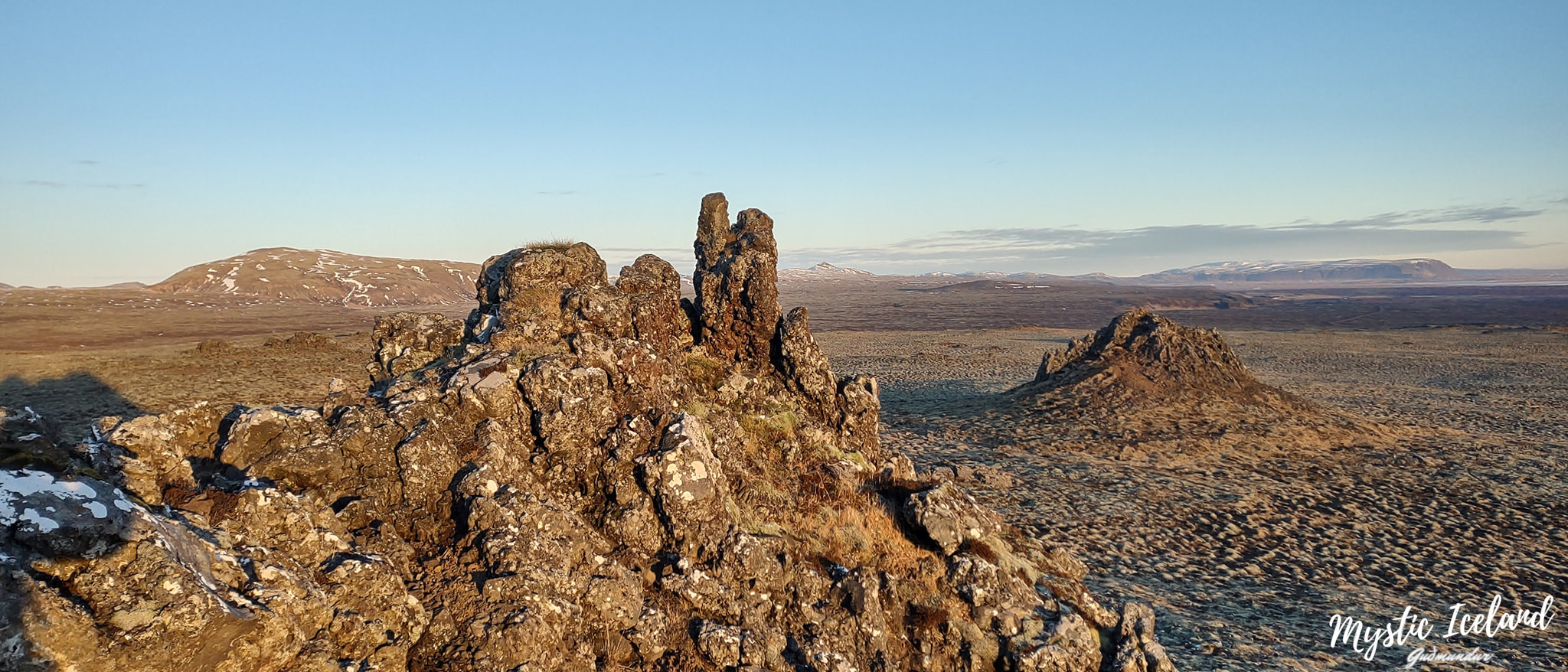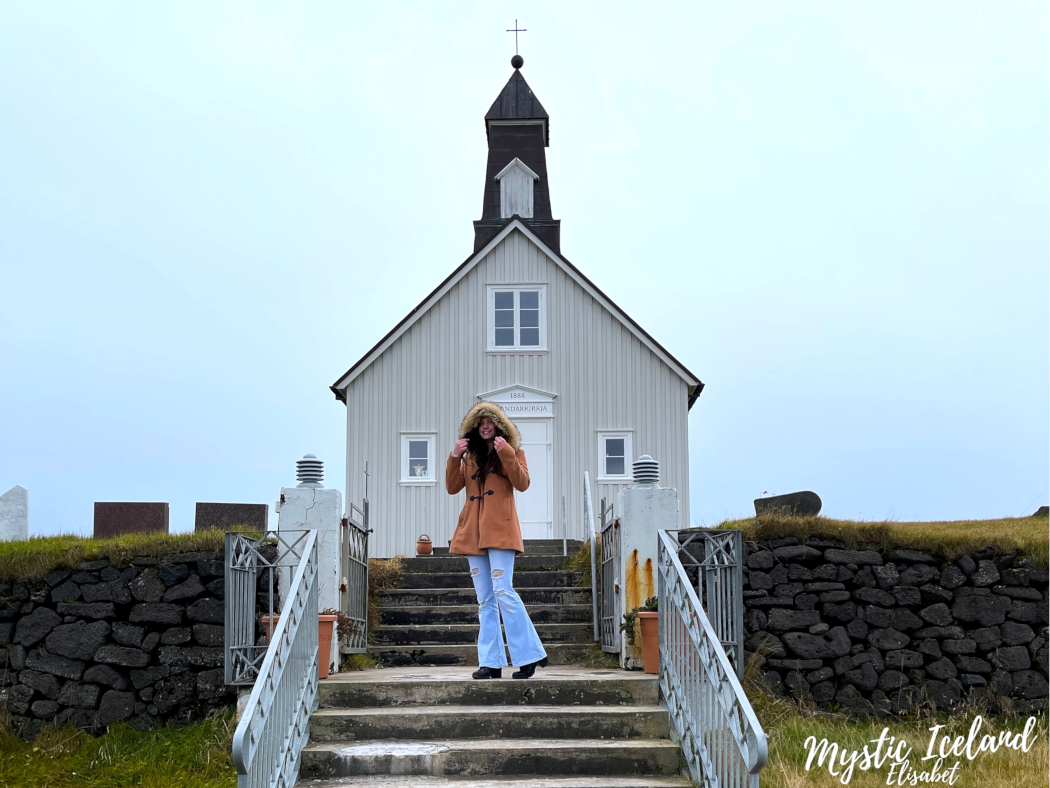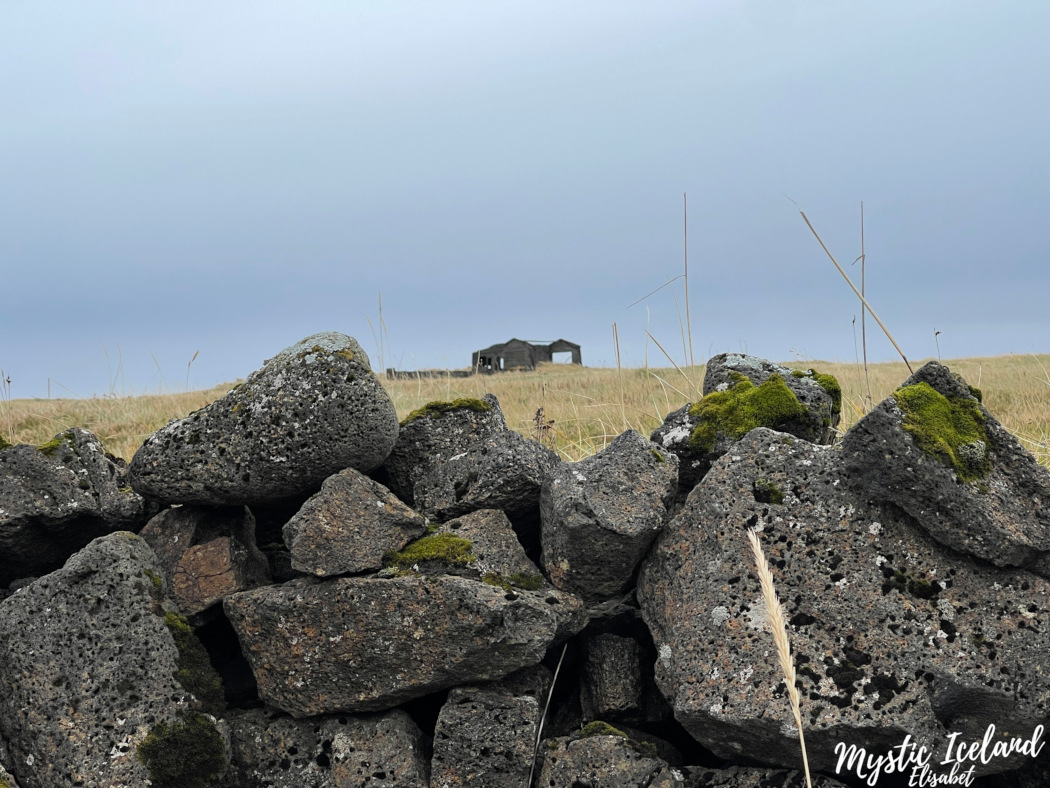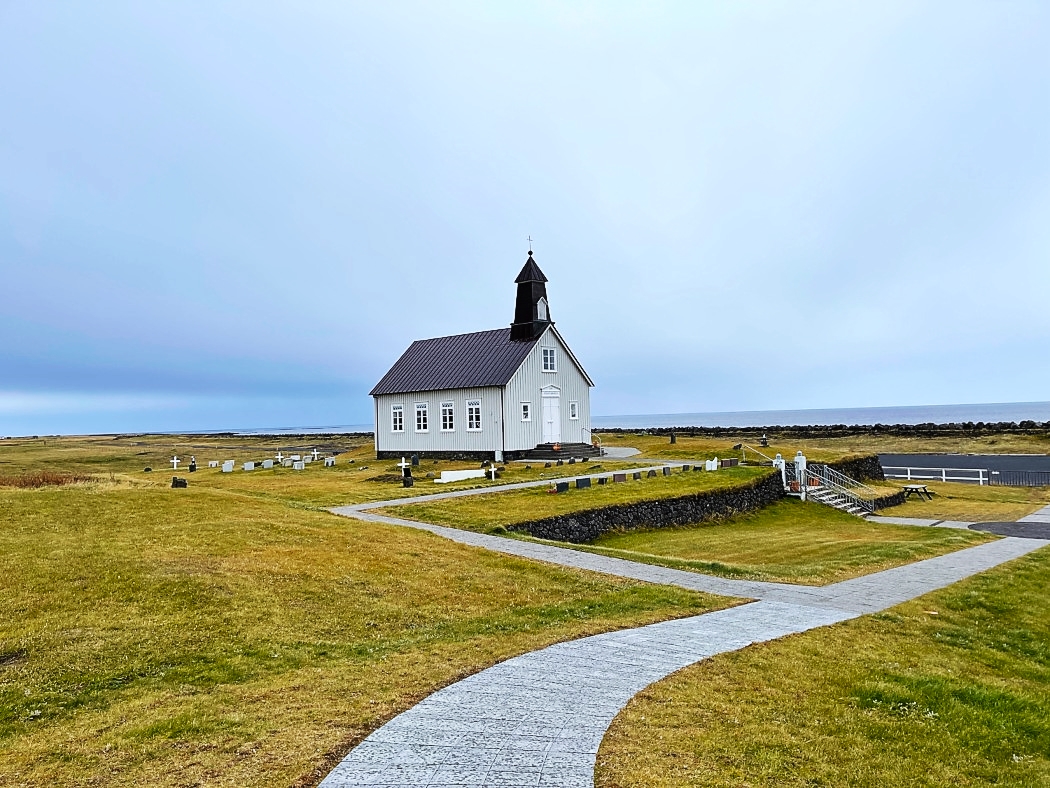Cross Mass Disaster
Drawing from the article Gissur, Þorláksskrín og Krossinn í Kaldaðarnesi by Óli Jón Jónsson in Sagnir posted by timarit.is under the license of CC PDM 1.0.
The Christian population in Iceland believed that the divine cross symbolizing Christ’s crucifixion had the power of God within it. They adored the cross so much that they held a Krossmass (Cross Mass) twice a year.
The first one was held in the spring on May 3rd to commemorate the discovery of Christ’s cross on that day in 320 A.D. The second celebration was in the fall on September 14th to commemorate the raising of Christ’s cross on Golgotha for the second time. These celebrations were perfect for organizing pilgrimages. During one such trip during Krossmass in September 1518, a group of at least 40 people stepped onboard a small ferry to cross the Ölfusá river.
The eager believers were on their way to make vows and bring gifts to the divine cross at Kaldaðarnes Church. This cross was special and more powerful than most other crosses. However, as they traveled across the river in the overcrowded ferry, the current kept getting stronger. There were too many bodies on board and the captain didn’t stand a chance against the icy cold glacial river. When they reached the halfway point, the raging ice-cold river flipped the boat on its face.
Reverend Böðvar from Garðir and his men desperately tried to save themselves with extrema unction (a Catholic sacrament to give health and strength to those who are in danger of dying) but it was too late. That day, as far as we know, the entire crowd on the ferry drowned in the ice-cold glacial water.
The miracle cross
On the other side of the river at Kaldaðarnes farm, only an arm stretch away from the sinking ferry was the church and its miracle cross. People sacrificed just about anything to get close to the cross, even taking a reckless chance of crossing the river unsafely. However, the divine cross had mighty powers.
These people didn’t have to be in the presence of the cross to draw from its powers. It was enough to find a spot with a direct view to it. Those who lived near Hellisheiði heath only had to get to a place where they could see Kaldaðarnes in the distance to feel its power. This place was Kambinn (the heath ridge).

Another popular place for women, the elderly and those too sick to make the journey was kvennagönguhóll. This is an elevation in the middle of the lava-covered Selvogsheiði heath where people could see the cross to ease their sufferings.
What was it about the cross at Kaldaðarnes that made it so powerful?
A miracle-cross donned the Kaldaðarnes Church in late-medieval Iceland. People donated their valuables to the cross in return for its blessings. Around the year 1550 a poem was written about it called “Kvæði um Kaldaðarneskrossinn” or “Ode to the Kaldaðarnes Cross”. The poem starts with a plea:
I ask men to listen, in Kaldaðarnes there is a cross. I want to recount that for men, nothing could be more glorious. Its glory shines widely. People across both land and sea praise the cross. It will rightfully stand forth when the Devils begin to whine.
The cross is so powerful that even the Devil retreats in its presence. The old Icelandic Vikings believed that being created in Rome made it divine. Its craftsmanship was impeccable, the Icelanders had never seen such a smoothly carved relic before, it was perfect. A cross made in Rome carved to perfection was sure to bring them fortune and wealth. This Roman relic was truly a gift from God and must be worshipped.

The miracles

Photo from Páll Lýðsson’s collection
The people worshipped the divine cross because it possessed the power of miracles. The stanzas tell the stories of its miracles. The poems became holy as well. In fact, in one stanza someone calls out:
“I pray to Christ and the Holy Cross, (that) whoever recites or learns this poem, that we may all, living and dead, be in Almighty God’s peace and freedom.”
It was Christ himself who made the cross holy and when you find yourself before the cross you have to make the sign of the cross on your body.
The stanzas tell the stories of sailors in peril who were miraculously saved. Wounds of both men and animals were healed. A boy died after swallowing a nail and the cross brought him back.
A boy from Sauðholt farm was found dead in a deep pit. His mother knelt before the cross and pleaded for his life back. Immediately after she plead, the boy stood up full of life. Acknowledging the miracle, the mother praised the divine cross.
The cross also healed the crippled and the blind. It raised animals from the dead and eased physical pain. Any hardships that people had in this earthly life, the divine cross had the power to ease their sufferings.
Worshipping the cross
Through the poems, we know that this divine cross had a waterfall of blood gushed all over it as an honor from God. We are also told to celebrate Krossmass every spring and every fall.
One stanza reminds us that Christ created this cross and raised half of it in heaven and the other half here on earth. The people beg the cross to protect the Christian men whose lives are in peril at sea and grant those worthy of reconciliation with Jesus after death.
People cry out to the cross:
“The power of God is within you as you heal all wounds. We ask every Christian man to love the Cross of the Lord dearly. Jesus himself loves the one who does his best to honor it late and early, with heart and mouth.”
The cross became the pathway to God. People truly believed that the powers of the cross were the same as the powers of the Holy Spirit. It healed the sick, the afflicted, eased their pain and helped those who believed in it. It guarded and protected all mankind from the dangers of the sea.
False gods
Drawing from the article Gissur, Þorláksskrín og Krossinn í Kaldaðarnesi by Óli Jón Jónsson in Sagnir posted by timarit.is under the license of CC PDM 1.0.
In 1547 the Lutheran Bishop at Skálholt, Gizur Einarsson, became tired of people worshipping an object or a false god, as he saw it. He rode his horse to the Kaldaðarnes church and tore down the cross and sat it aside. Out of respect, he chose not to destroy it. He got back on his horse to ride back home to Skálholt. On his way home he became ill and was sick all that winter. He never completely recovered and died the same year during lent from the same illness.
Gizur was buried in Skálholtskirkja church in front of the study (lodge).
He was a kindhearted and just man who strove for peace and neighborly love. Nonetheless, when Bishop Jón Arason took over in 1550, he deemed Skálholtskirkja church unclean or unholy because Gizur was buried there. Such a wild man was no fit for a church or a burial.
He had his men dig up Gizur’s body and bury him outside the churchyard. He then re-sanctified the church. When the king found out about this, he demanded that they dig Gizur back up and re-buried him in his original spot inside the churchyard.
Burned to ashes
People knew this was God’s punishment for what he had done to the cross. They were not about to let him deprive them of their blessings, so they brought the cross inside the church and placed it in the choir section. There it stood until Gísli Jónsson became Skálholt’s bishop in 1558.
Bishop Gísli finished what Gizur had started and had the cross taken down again and brought back to Skálholt. Once there, he had the cross chopped into small pieces and burned to ashes.
This wasn’t the end of the divine cross. It would take more than burning it to destroy its power. The few Catholic priests remaining in Iceland collected the ashes and any splinters they could find from the fire. One splinter from the cross found its way into the building material for the Strandarkirkja church.
Because of this, worshippers at Strandarkirkja can still reap the miracles of the divine Kaldaðarnes Cross.
When Brynjólfur Sveinsson became the bishop in Skálholt in 1639, he made it one of his deeds to gift Kaldaðarnes Church with a new cross as a severance. The cross became known as Brynjólfskross and is now at Þjóðminjasafn Íslands (National Museum of Iceland).
To study these poems in more detail, try these links:
https://bragi.arnastofnun.is/ljod.php?ID=4842 and (PDF) “O Holy Cross, You Are All Our Help and Comfort”. Wonderworking Crosses and Crucifixes in Late Medieval and Early Modern Norway. | Kaja Hagen – Academia.edu









3 thoughts on “How a divine cross caused people both misery and joy”
Comments are closed.